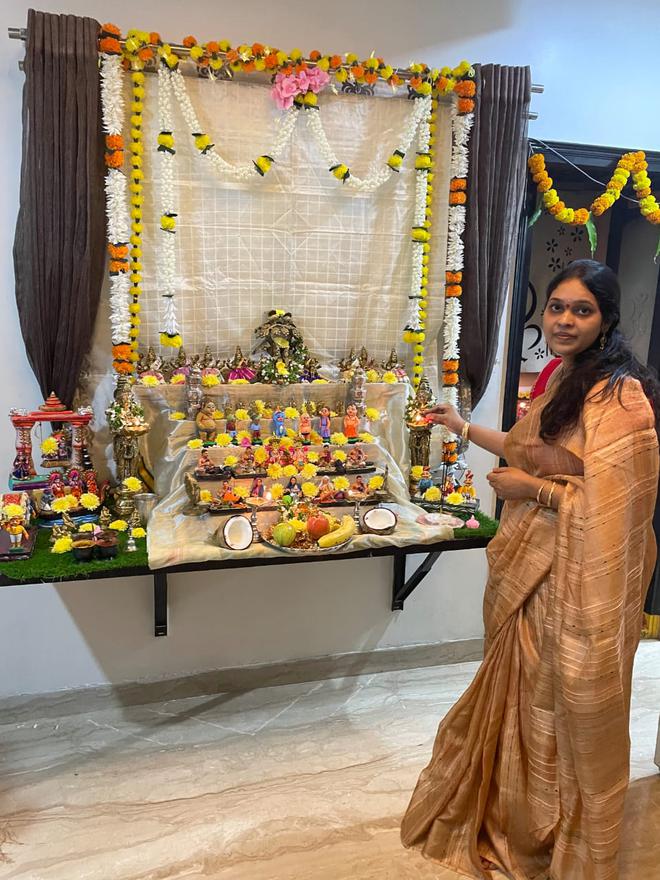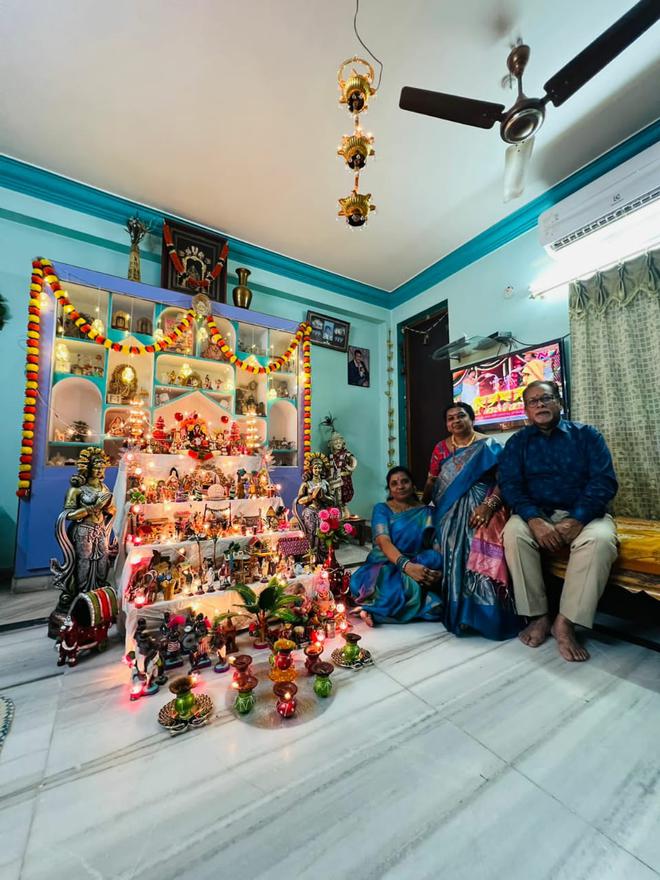Deepavali is celebrated with festivities across different communities. In Telangana, the festive spirit is traditionally associated with Bommala koluvu, a decorated display of dolls. While Karnataka and Tamil Nadu celebrate Dussehra with a similar display of dolls called Bombe habba and Golu, Bommala koluvu is an integral part of the festival of lights in Telangana households.

Bommala Koluvu meaning ‘a display of dolls’ brings tradition to the fore. A collection of dolls — brass, clay, wooden and even silver — of different sizes are arranged along with donthulu (clay pots closed with a lid, tied with a sacred thread and stacked on top of each other) and statues of gods and goddesses on a makeshift golu stand with three, five or seven tiers. The Bommala Koluvu, usually held for five days, begins on Naraka Chaturdasi, a day before Deepavali.
Pelaalu (puffed rice) and batheesaalu (sugar blobs) are kept inside the pots. “Donthi (a set of three pots) is a significant part of the koluvu. We light diyas, perform Lakshmi puja and invite women for tambulam ,” says M Sunita, a homemaker and adds, “It is a custom to add a new doll and donthi every year to signify growth and prosperity.”

Sunita has been organising a bommala koluvu for 37 years without a break. More than 200 dolls including some that have been passed down generations and silver donthulu take centrestage on a five-tier steel stand in the drawing room of her house in Chappal Bazaar. She also decks up her koluvu with a string of lights created from straw by her husband and themes depicting life in a tribal village, a railway station and waterfalls. “Once I had made tiny gulab jamuns and kept them in a toy kitchen set in front of Budda Buddi (bobble head couple dolls), which was a hit with children,” she recalls.
Reflecting on the significance of donthulu, Keerthana Gopi, a teacher at Gowtham Kids School in Saleemnagar Colony, says, “It was an age-old practice to safeguard ornaments, gold coins and cash in a vessel-shaped shelf covered with a big stone in walls, to protect it from thieves. Ippudu adi donthula ga maarindi; dhanamu dhaanyamu niluva pette kune kundalu (This evolved into donthulu, where grains and wealth were stored. It symbolises a storehouse of prosperity).”
A treasure trove of stories unveil at Haritha Harish Kotti’s house as she takes around 100 dolls from the attic at home. “I used to narrate mythological stories to my daughter while she helped me arrange the dolls,” she recalls. According to her, placement of the dolls is significant. While the gods and goddesses take the top-most tier on a stand, the lower ones are decorated with doll sets of birds, animals and couples, a traditional wedding scene complete with a music band, and dolls representing farmers. In Haritha’s koluvu, a set of Chota Bheem in different avatars adds a fun element. “Arranging an array of dolls with elaborate themes is a laborious process; preserving them, especially the clay ones, is equally challenging,” she says..
Narrating a childhood anecdote, Sunitha says, “We used to listen to stories of dolls talking about feeling happy at the way they were treated and blessing us while we were asleep.”
With people gearing up to usher in Deepavali festivities, Keerthana calls Bommala koluvu an opportunity for people to come together. “With nuclear families being the norm and a rise in smartphone addiction among children, this is an occasion to know different cultural narratives.”







